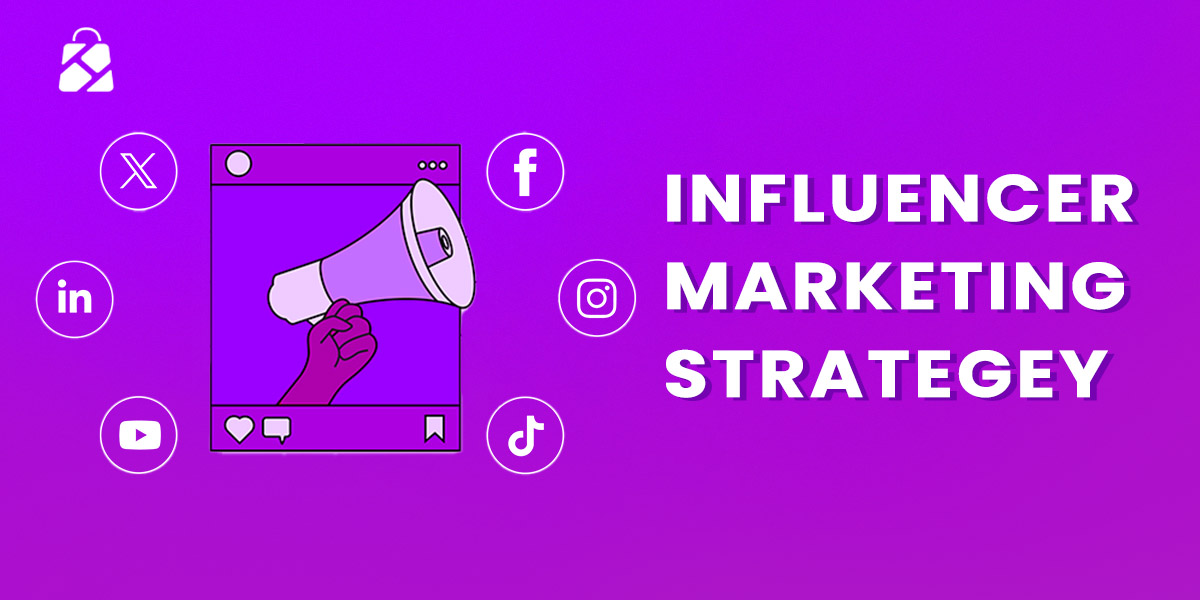Influencer Marketing strategy: Influence marketing and Influencer Marketing Strategy plays a significant role in today’s digital world. With the increasing presence of social media and various online platforms it has become important for brands to identify key influencers and leverage their networks to promote products and services.
Influencer Marketing Strategies
To create a strong influencer marketing strategy, start by picking influencers who match your brand. Create simple, honest content that their audience will like. Build a good relationship with the influencer to grow trust. Keep track of results and improve your plan to get better results.
In this article we will try to understand the concept of influence marketing its importance for businesses various strategies used and how brands can develop successful influencer campaigns. While the online space and opportunities have increased manifold developing impactful influence strategies requires thorough planning and monitoring to reap optimal results.
What is Influence Marketing?
Influence marketing involves partnering with individuals known as influencers who have established credibility and resonating voices with specific target audience segments. These influencers endorse or recommend brands products services or even causes to their followers through social sharing on blogs Instagram YouTube and other digital mediums.
They play a crucial role in driving awareness consideration purchase and advocacy among their engaged followers. For a brand, tapping into these highly targeted networks of influencers allows them to amplify their message to a wider relevant audience more authentically.
The key lies in identifying niche expert influencers who have high engagement from their followers and are aligned with the brand’s image philosophy and target audience.
Also Read: Top 15 Tips to How To Increase Instagram Followers
You can Earn via HaulPack by sharing HaulPack links with your followers. For instance, if you are doing a reel from Myntra showcasing 2 dresses, you can add the links to those dresses from Myntra to your HaulPack Collection and share your HaulPack collection link with your Followers via HaulPack Connect, story, or highlights. When your followers purchase anything Through your HaulPack link, you will get a commission on every purchase made through your Links. HaulPack has 50+ Brands Onboarded for affiliate marketing including Amazon, Myntra, Meesho, Ajio,
Urbanic and many more.
Top 10 Steps to Influencer Marketing Strategies 2025
1. Importance of Influence Marketing For Businesses

There are several reasons why influence marketing is becoming vital for business growth in today’s digital era. Firstly influencer endorsements result in higher credibility and trust among the audience when compared to traditional advertising. Followers tend to believe people similar to them rather than direct sales pitches from brands.
Secondly influence marketing is a cost-effective approach for brands to promote themselves. Partnering with multiple micro- and mid-level influencers spreads the message wider compared to a single celebrity endorsement. It also allows targeting niche communities that might be other wise difficult to reach.
Furthermore influence strategies have proven to deliver good returns on investment as engagement and conversions can be easily tracked and attributed. They provide a platform for brands to test new product offerings or ideas among small focused groups before mass launch. The authentic recommendations by influencers also translate to increased sales loyalty long-term advocacy and improved brand perception.
Also Read: Top 10 Youtubers In India 2024 | Biggest Stars You Need to Know
2. Influencer Identification and Segmentation

The initial step in developing an influence strategy involves identifying the right partners who are relevant to the brand’s messaging and target audience. Influencers can be segmented into macro micro and nano-based on their reach. Celebrities or public figures with millions of followers fall under the macro category.
Mid-level influencers with engagement rates in tens of thousands are micro. Nano influencers have niche expertise and a community of thousands. For niche brands or products nano influencers often generate better engagement. Influencers also need to be evaluated on their engagement and authenticity quotient content style audience demographics and passions.
Brands also use analytical tools to map influencer networks and understand their true influence beyond vanity metrics. Once potential partners matching brand attributes are shortlisted their interests and alignment with campaign goals need to be gauged through initial discussions.
3. How to Craft Influencer Relationship Management

The next crucial step is to build genuine long-term relationships with shortlisted influencers. This involves clear negotiation on the objectives of the partnership influencer compensation or benefits content format posting cadence and performance tracking process among other things.
Maintaining transparency and flexibility in engagement is important here to ensure influencers feel valued. Brands often start small with nominal partnerships to understand influencers better before scaling up collaborations.
Nurturing influencer relationships requires regular communication addressing their needs feedback on ideas exclusive early product access and experiences. It helps cultivate deeper understanding trust and willingness to promote organically in the future as well.
Regular performance evaluation also strengthens and influences the level of engagement and content quality throughout partnerships. Proactive relationship management ensures influencers feel heard and motivated to sustain promotional alliances with brands.
4. How to Craft Influence Campaigns

With target influencers onboard brands need to devise impactful promotional campaigns around specific products initiatives occasions or goals. The first step should be creating a brief laying out the key message call-to-action timeline performance metrics and roles. Well-crafted creative assets like ready information discussion points promotional codes and product shots need to be shared.
Influencers require flexibility and creative control to curate authentic endorsements in their voice. Campaigns often span sponsored posts Instagram or YouTube videos branded hashtags Twitter threads or even offline engagements. Coverage across social platforms maximizes a campaign’s discoverability and amplification.
Choosing the most impactful influencers from each segment ensures a wider reach. Consistent dialogue and feedback during the campaign keep influencers engaged. Performance tracking tools provide real-time data on engagements and conversions to measure success.
Also Read: Latest New Instagram Features Influencers Must Know in 2024
5. Influence Marketing Strategies
Some effective strategies brands employ in their Influence Marketing programs are:
- Reviews and recommendations – Influencers Highlight the top features of products or services in an unbiased manner focusing on quality utility and value.
- Tutorials and demonstrations – Step-by-step Instructions and live demos showing products in use build understanding and Credibility.
- Contests and giveaways – Challenges or prizes prompt followers to engage with branded posts and increase visibility.
- Affiliate links and codes – Influencers earn commissions and followers get discounts on purchases through special Influencer Links.
- Sponsored stories – Influencers candidly discuss brand events or causes woven into their regular content.
- Advocacy amplification – Brands request influencers to amplify user-generated content and advocacy from existing customers.
- Influential collaborations – Bringing together influencers from synergistic fields sparks cross-pollination of niche communities.
- Offline activations – Complement online promotions with visits and product experience activations that influencers cover in their updates.
- Co-created content – Jointly developing exclusive influencer-oriented video or written stories foster stronger advocates.
- Behind-the-scenes access – Sharing insider Brand information and stories maintains interest and establishes authority.
6. Influence Marketing Measurement | Influencer Marketing Strategy

Gauging the effectiveness of influence strategies requires brands to establish relevant metrics and analyze campaign data thoroughly. Some metrics brands analyze are:
- Impressions reach – Total number of times campaign posts were seen by people
- Engagements – Likes comments shares and reactions generated from influencer posts
- Clicks/traffic – Number of persons clicking on influencer links to brand websites or profiles
- Conversions – Leads sign-ups and purchases directly attributed to influencer promotions
- Sentiment analysis – Polarity of conversations and opinions shared by influencers
- Follower growth – Increased subscriptions to influencer or brand profiles during the campaign
- Brand awareness perception tracking – Surveys to understand the impact of these goals
- Sales attribution – Portion of revenue transactions attributable to each influencer
- Cost per acquisition – Investment versus new customers acquired through influences
Drawing comparisons across metrics pre and post-campaign determines real influence and return on objectives. Qualitative feedback from influencers also provides room for improvement in future strategies.
Conclusion | Influencer Marketing Strategy
Influence marketing Strategy has emerged as a pivotal approach for brands to engage the right target audiences through authentic recommendations. Identifying niche experts nurturing long-term relationships crafting contextual campaigns and measuring impact comprehensively hold the key to success.
While the influence space continuously evolves core fundamentals remain – choosing the most engaging partners aligned to the brand giving them creative freedom to share experiences and focusing on real value delivered to followers over short-term gains. An optimal influence Marketing strategy backed by genuine partnerships amplifies brand messages powerfully in today’s digital landscape.






